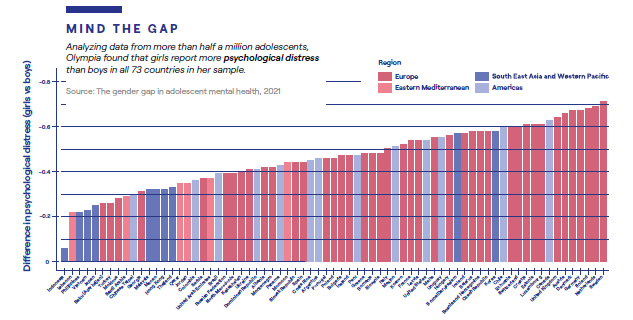This article was published in TSE science magazine, TSE Mag. It is part of the Autumn 2024 issue, dedicated to health. Discover the full PDF here and email us for a printed copy or your feedback on the mag, there.
Women struggle with anxiety and depression more than men, often almost twice as much. A global study by Olympia Campbell (IAST) and her coauthors investigates whether this gender gap in mental health can be found in teenagers from different cultures.
Unlike previous research on WEIRD (Western, Educated, Industrialized, Rich, and Democratic societies), Olympia’s study uses multiple measures of mental health collected in the same way across 74 countries. Her results confirm that teen girls report lower well-being than boys, especially in terms of psychological distress and life satisfaction. But the size of the gender gap is highly variable and even reversed in some places, such as Saudi Arabia and Jordan, suggesting it is rooted in social structures rather than biological differences.
Surprisingly, she finds larger mental health gaps in more gender-equal countries. “A possible explanation is that advances in equality often hide modern forms of sexism,” says Olympia, “producing a gap between expectations and reality whereby girls expect a great deal more equality than they find.” She also points to the “multiple and often incompatible roles that women in gender-equal countries must balance”, combining traditional and modern ideas about the ideal woman. It may be that clarity about a woman’s role in society produces lower levels of distress in gender-unequal countries.
These challenges for modern women do not mean they prefer traditional gender roles. “Without better measures of sexism,” Olympia adds, “we cannot know the true impact of social changes. Nor do we know how women will feel if advances in gender equality continue.” They may well be much happier.





